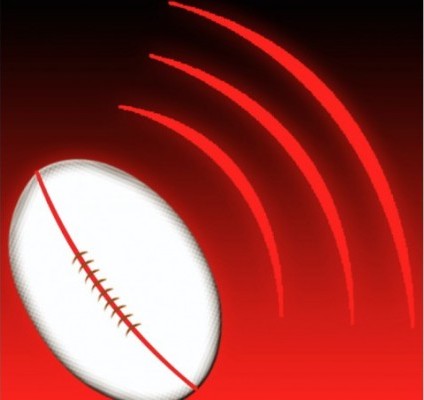NCR Looks at Second Full Year for Men's D1, D2 Rugby
NCR Looks at Second Full Year for Men's D1, D2 Rugby
Coming out its first full year of running men’s D1 college competitions, National Collegiate Rugby enters the fall of 2022 with some changes, and at the same time some validation for their approach.
GRR spoke at length with Men’s DI and DII Commissioner Brad Dufek about what NCR did right, and what they will be adjusting. Here’s a look at some of that.
The Time Investment
It appears that D1 men’s college rugby took more time and effort than NCR expected. They adjusted pretty quickly, but Dufek’s comment about it is telling: “The difference between the D1 [and D2] is those [D1] coaches are much more invested in all aspects of their programs. Engagement for them is a little bit more complex.”
For some of those teams, specific matchups are very important to them; some want to travel a lot, and some don’t.
“It’s just on us to put something together for them to see and say ‘hey this is pretty cool,’” said Dufek. “Obviously you’ve got to be pretty nimble.”
That was one reason why NCR raised dues this year. After establishing a new dues structure in the fall of 2020, NCR now has had some time to see whether that structure was working.
In the end they decided to raise dues. The previous system gave teams the option of a team fee of $1,300 and a further $20 per player, or a $160 team fee and $65 per player—the higher team fee was cheaper if you had more than 25 on your roster. The new system has options of a team fee of $1,750 and $30 per player, or $200 team fee with $75 per player.
(We’re not comparing this you USA Rugby yet because we haven’t confirmed the final number from them—we’re close but also that’s a completely separate article. But spoiler alert, USA Rugby is increasing dues by a small percentage.)
The upshot of that change is that the threshold for the higher team fee is now 35, and also that the bulk of the raise in dues affects large-roster players (the increase is about 16% for smaller teams and about 40% for larger teams). This reflects the fact that larger (read, D1) teams require more resources.
“D1 want more for their money and are willing to pay for it,” said Dufek.
“We’re in a different spot than we were last year,” added Smith. “We’ve been able to expand our staff, [and] our members know 100% of their dues is reinvested back into the college game and that’s a really important principle for us.”
The Playoffs
NCR staff suspected that two-game weekends were not popular and they were right. They ran single-game playoff weekends in D1, but not in D1AA, where the quarterfinals and semifinals were held November 19 and November 21. Dufek said about four to six teams opted out of the playoffs because there were two-game weekends.
Interestingly, the shift to a Friday-Sunday format was an improvement for the D2 teams and they embraced that. But in D1AA, this fall there will be no two-game playoff weekends.
“It’s all about membership services,” said Chief of Operations Wade Smith. “We want a playoff system that works for everyone.”
The other story out of the fall 2021 playoffs was the midseason re-tracking of some teams into different divisions. Ultimately, said Dufek, NCR wants each conference to lead to one playoff. That may not happen this fall, but they’re closer. The development of the Big Rivers conference assembles six school-supported men’s programs and they will feed directly into the D1 playoffs. In addition, the Liberty is splitting into tiers, and being in the two strongest Ivy League teams (Dartmouth and Brown) into their top tier. The Southern Conference, which has combined D2 and Small College teams, now has a D1AA tier, bumping up UNC Chapel Hill, Belmont Abbey, Citadel, and Lander.
But some major universities still seem to be in the wrong division (Virginia in the Cardinals, for example), and the Rugby East will see Virginia Tech go off to D1AA playoffs (which they won last year) rather than follow the other 10 teams into D1 or CRAA’s D1A championship. There are examples, such as Southern Nazarene in the Gateway D2, where a team is not eligible for playoffs because it is school-supported, but its only competitive option is a D2 conference, for now.
Overall, we’ll see no two-game weekends for D1 and D1AA. We will still see play-ins and two-game weekends in D2, largely because there are just so many teams, but the two-game weekends will have a rest day. Teams should know what playoff they are shooting for before they start playing.
Divisions
And all of this relies on the ever-elusive definition of what colleges play in what division. Dufek took a pretty solid crack at it:
D1: School-supported program or and high performing clubs, usually in bigger schools;
D1AA Club: The name itself is shifting to D1 Club and will probably be called D1AA Club this year. These are true club programs in bigger universities.
D2: Smaller-scaled schools and lesser known brands, and while there is the odd example of school-supported teams, they have small enrollments.
“D2 is fun to work with,” said Dufek. “It made up of teams will do anything for good competition. But look at how we entered last fall. This was our first full registration; we didn’t know what we had, there were so many unknowns. So really we were pretty pleased with how we assembled everything.”
Growth
It’s a touchy subject at times, NCR’s growth ... or recruiting. They market their brand pretty hard and while that’s the prerogative of any organization, the rivalry between NCR and CRAA (which we’ve tried to avoid in this article) is palpable. This is especially true when you have conferences (Rugby East, NCRC) where several members are securing membership in both NCR and USA Rugby, and making different playoff decisions.
(This is how we got a Rugby East team winning NCR’s D1, in St. Bonaventure, and a Rugby East team winning CRAA’s D1A, in Army.)
One wonders if that will be more complicated as we wait for about a week to see who commits to which organization. There may be some new NCR teams.
“Our first priority to deliver a really strong value proposition,” said Smith. “We are having conversations with respective conferences and teams—most of them come to us and that’s really gratifying. We are obviously looking to increase our scale to because it’s good for members, but it’s not an active sales pitch; it’s doing the best we can for our members and looking for other organizations coming to NCR.”
So a slightly different NCR picture for the men’s D1 and D2 competitions, but not drastically so. D2 has indeed added the SCRC and Rocky Mountain (renamed the High Peaks), while, as stated above, the D1AA playoffs will shift to a one-game weekend format. Dues are up, some conferences have realigned or formed anew, now it’s off to Year Two.











